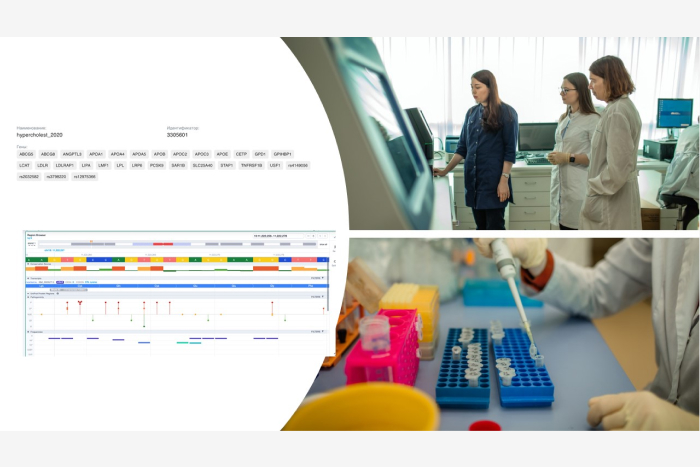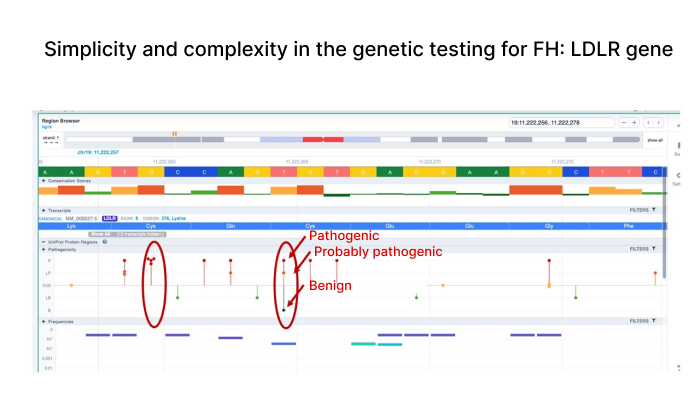
Genetic testing for FH: a series of VUS translated into positive variants
Familial hypercholesterolaemia (FH) is a primary genetic dyslipidaemia that leads to cardiovascular disease at an early age. FH can be diagnosed without the results of molecular genetic testing, but the identification of a specific mutation helps to ensure timely cascade screening and the selection of personalized treatment. At the same time, a significant discrepancy between clinical and genetic diagnosis of the disease remains one of the key scientific problems. There are known cases in which carriers of pathogenic mutations do not have clinical manifestations of FH, but more often the opposite situation is observed: about 10-40% of patients with clinically probable FH do not have "classical" causative mutations or are carriers of so-called variants of uncertain significance (VUS) in already known genes, which neither confirms nor denies the diagnosis.
As part of the project "Development of personalized approaches for the identification and stratification of cardiovascular risk in patients with familial hypercholesterolaemia using biomodels of atherosclerosis and genome editing technologies", specialists from the Research Laboratory of Lipid Metabolism Disorders and Atherosclerosis and the Research Laboratory of Molecular and Cellular Modeling and Gene Therapy of the WCRC for Personalized Medicine", together with colleagues from the University of Milan and the Sapienza University of Rome analyzed the data from patients with a severe familial hypercholesterolaemia phenotype without pathogenic variants in the "classical" genes responsible for the development of familial hypercholesterolaemia: LDLR, APOB, PCSK9, APOE, STAP 1, LDLRAP1, but with VUS variants. As a result of this work, a number of VUS variants in the LDLR gene have been reclassified as pathogenic, which is extremely important for improving the accuracy of the diagnosis of the disease, for choosing an appropriate regimen of therapy intensity, as well as for the screening and management of the family of such a patient.
The results, obtained in collaboration with
Italian colleagues, will be published in the Q1 international journal. Further
analysis of the accumulated cascade screening data in first-degree relatives
will allow us to assess the presence of criterion components for the
translation of VUS variants in other genes into pathogenic ones.

30.01.2024
